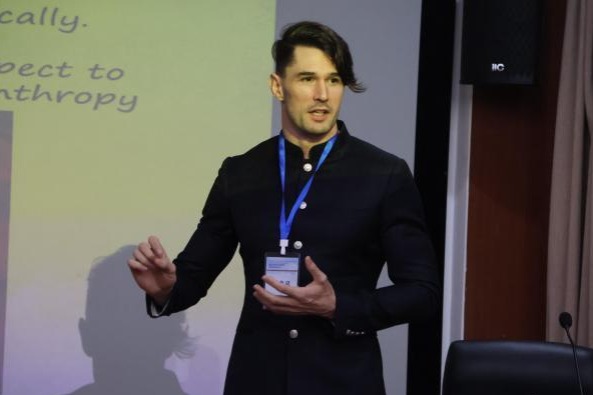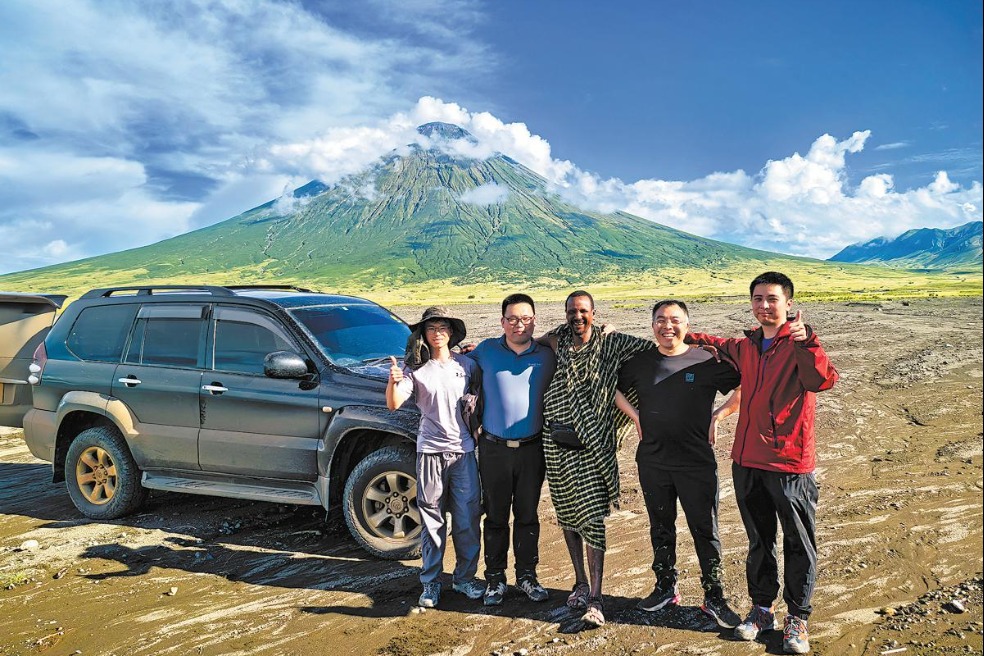Revitalized river the source of success

By integrating ecological river management, water tourism, and the involvement of local villagers in water governance, Longli county in the Qiannan Bouyei and Miao autonomous prefecture of Guizhou province is exploring a model that seamlessly blends water conservation with economic growth.
The Sanyuan River, Longli's largest waterway, flows through Lianhua village, where its wide expanse and crystal-clear waters create a picturesque scene alongside the green mountains. Nearby, visitors set up tents and enjoy barbecues by the riverbank.
"Before 2020, the river's channel was relatively narrow, bordered by farmland, and tourism was sparse," said Deng Maoqin, a staff member with the county's water resources bureau. "The development of tourism and dining was still in its infancy. Local residents mainly relied on farming or sought work in the county town for their income."
Thanks to a pilot project launched in 2020, aimed at integrating water systems and developing scenic water villages, significant efforts have been made to optimize river space, dredge and clean river channels, reinforce riverbanks, and enhance the landscape with local features.
"This project is characterized by a shift from rigid management to ecological management," said Deng. "For example, instead of using grouted rubble to construct river channels, we employed stone-throwing techniques to build embankments, creating a conducive environment for vegetation. We also constructed weirs in the river to increase interaction between people and the water."
The project has benefited 8,202 rural residents and 500 hectares of farmland. Upon completion, it expanded the water area by over 13 hectares, significantly enhancing the water retention capacity and recreational function of the river, according to the bureau.
In 2023, on the back of the achievements of the project, Lianhua village cooperated with private companies to develop cultural and tourism projects. The village contributed land surrounding the river as equity, while the companies took charge of building facilities such as campsites, children's playgrounds, fruit-picking gardens and barbecue areas. The benefits generated are distributed based on a tiered revenue-sharing model, with a minimum dividend of 240,000 yuan ($33,700) each year for the village collective.
One of the projects, named Four Seasons Floral Wonderland, created seasonal attractions along the river — blossoms in spring, lotuses in summer, reeds in autumn and plums in winter. Last year, it attracted over 10,000 visitors, according to an assistant manager of the project.
"We have outsourced the stalls along the river to professional companies to maximize villagers' earnings," said Yang Guangsong, former first secretary of the village. By the end of last year, the village collective's earnings surpassed 600,000 yuan.
To establish a sustainable management framework, local authorities have encouraged villagers to contribute their own share and reinvest in river governance. The village has allocated a portion of its dividends to hire companies for river cleaning and landscape maintenance. Meanwhile, it has pioneered a community-based river and lake management system, focusing on raising public awareness, enhancing community autonomy, improving problem-solving capabilities, and implementing a reward-and-punishment system.
An incentive system was also introduced to encourage villagers to participate in volunteer river cleaning activities, fostering a new management model where "everyone governs, everyone supervises".
"The changes are evident," Deng said. "In the summer, the riverside in Lianhua village is bustling with people, and locals genuinely care for the river. If someone throws trash carelessly, they're quick to intervene. The river's water quality continues to improve."





































